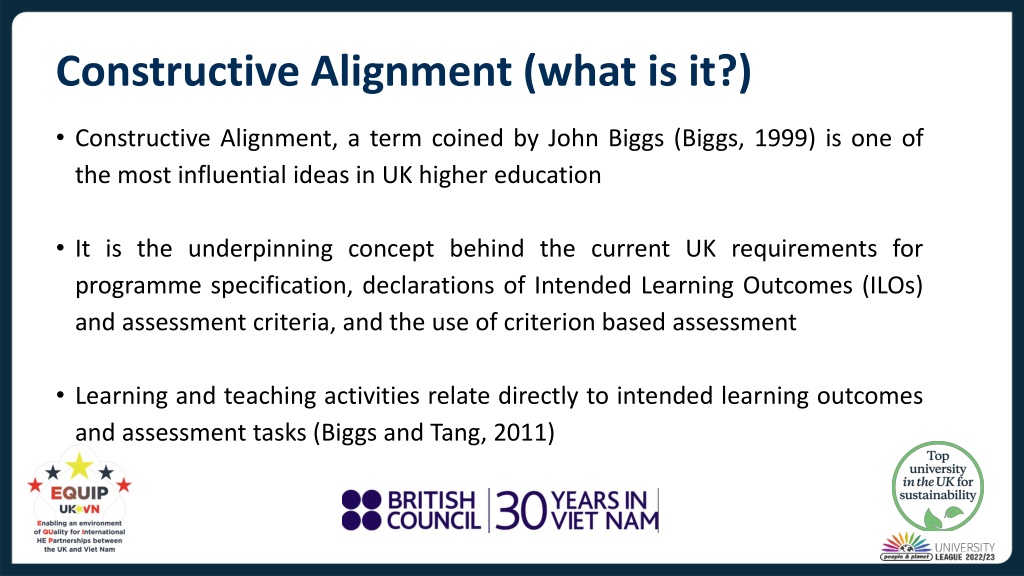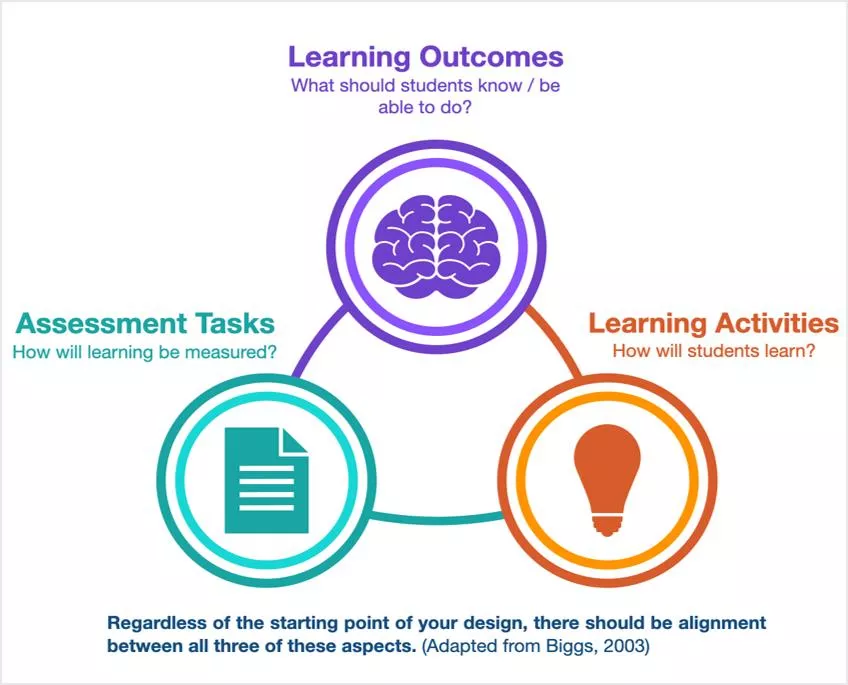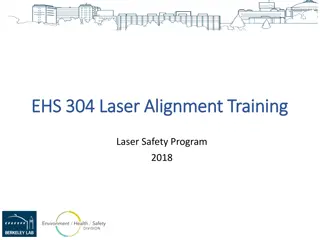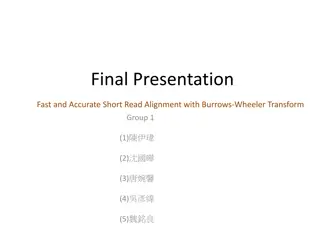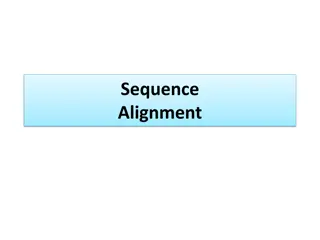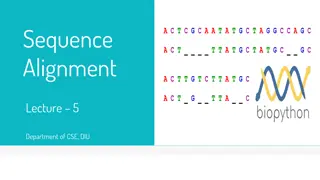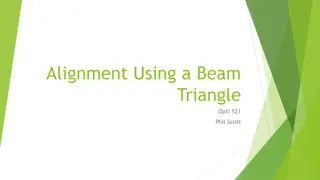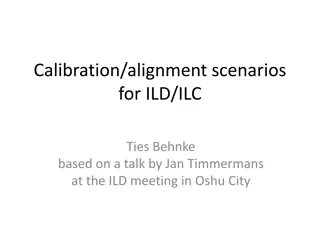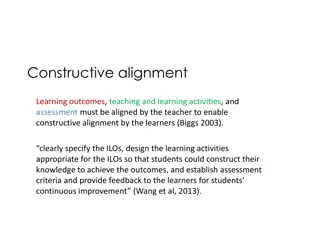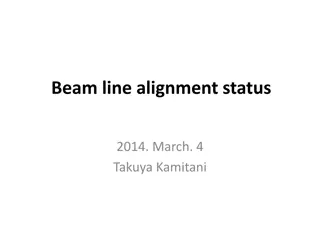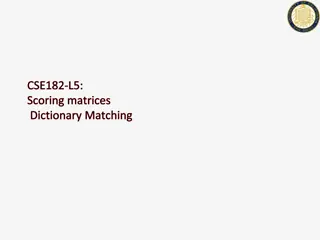Constructive Alignment in Higher Education
Constructive Alignment, introduced by John Biggs, is a foundational concept in UK higher education that focuses on aligning learning activities, assessment tasks, and intended learning outcomes within a program. By ensuring alignment, students are more likely to understand what is expected of them and work effectively towards achieving the desired outcomes. This approach enhances student engagement, performance, and confidence in managing their own learning.
Download Presentation

Please find below an Image/Link to download the presentation.
The content on the website is provided AS IS for your information and personal use only. It may not be sold, licensed, or shared on other websites without obtaining consent from the author. Download presentation by click this link. If you encounter any issues during the download, it is possible that the publisher has removed the file from their server.
E N D
Presentation Transcript
Constructive Alignment (what is it?) Constructive Alignment, a term coined by John Biggs (Biggs, 1999) is one of the most influential ideas in UK higher education It is the underpinning concept behind the current UK requirements for programme specification, declarations of Intended Learning Outcomes (ILOs) and assessment criteria, and the use of criterion based assessment Learning and teaching activities relate directly to intended learning outcomes and assessment tasks (Biggs and Tang, 2011)
Constructive Alignment (what is it?) The basic premise of the whole system is that the curriculum is designed so that the learning activities and assessment tasks are aligned with the learning outcomes that are intended in the programme. This means that the system is consistent and systematic
Constructive Alignment (why to do it?) If we have a clear idea of what we want students to be able to do at the end of a unit of study, we can communicate these intended learning outcomes to students so they can share in the responsibility of achieving them We know that students will tend to look at the assessment and structure their learning activities, as far as they are able, to optimise their assessment performance If we ensure that the assessment very obviously does test the learning outcomes we want students to achieve, then, by being strategic optimisers of their assessment performance, students will actually be working to achieve the intended learning outcomes
Constructive Alignment (why to do it?) Consequently, the ILOs, the learning activities and the assessment should all be aligned. The assessment criteria should differ from the ILOs only in so far as that they might give more detail of performance levels required for specific marks If we tell students that we want them to achieve something (ILOs) and then assess them against assessment criteria that do not match, they will feel cheated and will become cynical strategic surface learners Alignment is really simply a matter of honesty and fairness that establishes the trust required for students to be confident that they can manage their own learning
Constructive Alignment (how to do it) If we are taking a single component of a programme, we can 'Constructively Align' that by tackling the following steps: Defining the learning outcomes with care and in line with guidance Selecting learning and teaching activities likely to enable the students to attain the outcomes Assessing the students' outcomes and grading the students learning using assessment criteria that is closely aligned with the learning outcomes Constantly reflecting on practice and making changes to design and delivery (being a reflective practitioner)
Constructive Alignment (discussion time) In breakout groups: 1. Thinking of a particularly successful teaching experience, what do you think made this so successful? Share this experience with others.. 2. Following this, try to link the concepts of Constructive Alignment to the experience. Be prepared to feed back to the wider group.
Presentation Links QAA Quality Code The Quality Code (qaa.ac.uk) Framework for Higher Education Qualifications (FHEQ) https://www.qaa.ac.uk//en/quality-code/qualifications-frameworks QAA Subject Benchmark Statements https://www.qaa.ac.uk//en/quality-code/subject-benchmark-statements Gaby Tobin Additional References Head of Quality Enhancement Anderson, L.W., Krathwohl, D.R., Airasian, P.W., Cruickshank, K.A., Mayer, R.E., Pintrich, P.R., Raths, J., & Wittrock, M.C. (2001). A taxonomy for learning, teaching and assessing: A revision of Bloom s Taxonomy of Education Objectives (Complete edition). New York: Longman. Biggs, J, Aligning teaching for constructing learning, HE Academy (available at this link) https://www.advance-he.ac.uk/knowledge-hub/aligning-teaching-constructing-learning gtobin@cardiffmet.ac.uk Biggs, J., and Tang, C. (2011). Teaching for Quality Learning at University. Open University Press Bloom, B.S. (1956). Taxonomy of Educational Objectives: The Classification of Education Goals. Longmans: London, W1. Penney, D., Brooker, R., Hay, P., and Gillespie, L. (2009). Curriculum, pedagogy and assessment: three message systems of schooling and dimensions of quality physical education. Sport, Education & Society, 14(4), 421-422.
Introduction to Constructive Alignment Dr Joanna Hendy & Jenny Hann
Aims of this session Explain the concept of constructive alignment Identify the benefits of constructive alignment Consider examples of how constructive alignment can enhance learning and teaching
Review these useful videos on Constructive Alignment Short video about Constructive Alignment Another short video about Constructive Alignment Teaching Learning Activities Intended Learning Outcomes Assessment Feedback Tasks
Constructive Alignment: defining it Constructive: Referring to the way in which students learn (i.e. constructivist learning philosophies) Alignment: The role the teacher plays in structuring four key components of learning Defining Intended Learning Outcomes (ILOs) Choosing activities that lead to the ILOs Assessing students actual learning (cognitive and skill, surface or deep) Arriving at a final grade for assessment
What is it? Penney, D., Brooker, R., Hay, P., and Learning and teaching activities relate directly to intended learning outcomes and assessment tasks (Biggs and Tang, 2011); The learner constructs their own learning through relevant activities; The role of the teacher is to create a supportive learning environment with relevant learning activities; Impacted by external influences such as grade descriptors, benchmark statements, regulatory bodies and other institutional drivers. Penney, D., Brooker, R., Hay, P., and Gillespie, L. (2009). Curriculum, pedagogy and assessment: three message systems of schooling and dimensions of quality physical education. Sport, Education & Society. 14 (4), 421-422.
Interactive Task Constructive Alignment: An example In groups of 4 or 5: 1.Thinking of a particularly successful teaching experience, what do you think made this so successful? Share this experience with others.. 2.Following this, try to link the concepts of Constructive Alignment to the experience.
Constructive Alignment: Closing the loop To plan effectively for any learning event, however small, we need to consider the core components: Defining Intended Learning Outcomes (ILOs) Choosing teaching and learning activities that lead to the achievement of the ILOs Assessing students actual learning (cognitive and skill, surface or deep) Arriving at a final grade for assessment
What is the impact of positive Constructive Alignment? Surface learning: associated with acceptance, memorisation, and surface retention of information Deep learning: associated with understanding, connecting concepts and critical analysis
Constructive Alignment: Interactive Task Working in groups of 5 Take an existing module descriptor, teaching activities and assessment examples to ask the question: Do the learning outcomes, assessment and teaching align to enable effective student learning? Is there scope for improvement? How might the module be improved?
Constructive Alignment: Negotiating the Terms under Assessment Can you define the following, and rank them: Knowledge Application Evaluation Comprehension Synthesis Analysis
Constructive Alignment: Negotiating the Terms under Assessment Knowledge: evidence, the source material - Consider written material, numerical data Application: of the evidence of your understanding - Consider processing content of existing knowledge Evaluation: judgement of others work arguments - Consider strengths, weaknesses, drawing out a position Comprehension: understanding and contextualising your evidence - Consider looking for patterns, messages Synthesis: formulation of your own ideas based on others work - Consider conclusions, theories Analysis: evidence of data, others evidence - Consider component parts, comparisons and contrasts
Constructive Alignment Reflections on constructive alignment - what new idea, if any, will be your 'take away' from this session?
